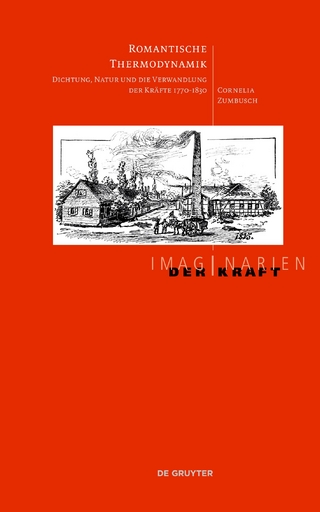
Phantasmatic Shakespeare
Imagination in the Age of Early Modern Science
Seiten
2018
Cornell University Press (Verlag)
978-1-5017-2655-2 (ISBN)
Cornell University Press (Verlag)
978-1-5017-2655-2 (ISBN)
Representations of the mind have a central place in Shakespeare’s artistic imagination, as we see in Bottom struggling to articulate his dream, Macbeth reaching for a dagger that is not there, and Prospero humbling his enemies with spectacular illusions. Phantasmatic Shakespeare examines the intersection between early modern literature and...
Representations of the mind have a central place in Shakespeare’s artistic imagination, as we see in Bottom struggling to articulate his dream, Macbeth reaching for a dagger that is not there, and Prospero humbling his enemies with spectacular illusions. Phantasmatic Shakespeare examines the intersection between early modern literature and early modern understandings of the mind’s ability to perceive and imagine. Suparna Roychoudhury argues that Shakespeare’s portrayal of the imagination participates in sixteenth-century psychological discourse and reflects also how fields of anatomy, medicine, mathematics, and natural history jolted and reshaped conceptions of mentality. Although the new sciences did not displace the older psychology of phantasms, they inflected how Renaissance natural philosophers and physicians thought and wrote about the brain’s image-making faculty. The many hallucinations, illusions, and dreams scattered throughout Shakespeare’s works exploit this epistemological ferment, deriving their complexity from the ambiguities raised by early modern science.
Phantasmatic Shakespeare considers aspects of imagination that were destabilized during Shakespeare’s period—its place in the brain; its legitimacy as a form of knowledge; its pathologies; its relation to matter, light, and nature—reading these in concert with canonical works such as King Lear, Macbeth, and The Tempest. Shakespeare, Roychoudhury shows, was influenced by paradigmatic epistemic shifts of his time, and he in turn demonstrated how the mysteries of cognition could be the subject of powerful art.
Representations of the mind have a central place in Shakespeare’s artistic imagination, as we see in Bottom struggling to articulate his dream, Macbeth reaching for a dagger that is not there, and Prospero humbling his enemies with spectacular illusions. Phantasmatic Shakespeare examines the intersection between early modern literature and early modern understandings of the mind’s ability to perceive and imagine. Suparna Roychoudhury argues that Shakespeare’s portrayal of the imagination participates in sixteenth-century psychological discourse and reflects also how fields of anatomy, medicine, mathematics, and natural history jolted and reshaped conceptions of mentality. Although the new sciences did not displace the older psychology of phantasms, they inflected how Renaissance natural philosophers and physicians thought and wrote about the brain’s image-making faculty. The many hallucinations, illusions, and dreams scattered throughout Shakespeare’s works exploit this epistemological ferment, deriving their complexity from the ambiguities raised by early modern science.
Phantasmatic Shakespeare considers aspects of imagination that were destabilized during Shakespeare’s period—its place in the brain; its legitimacy as a form of knowledge; its pathologies; its relation to matter, light, and nature—reading these in concert with canonical works such as King Lear, Macbeth, and The Tempest. Shakespeare, Roychoudhury shows, was influenced by paradigmatic epistemic shifts of his time, and he in turn demonstrated how the mysteries of cognition could be the subject of powerful art.
Suparna Roychoudhury is Associate Professor at Mount Holyoke College.
List of Illustrations
Acknowledgments
Introduction: Theseus, Phantasia, and the Scientific Renaissance
1. Between Heart and Eye: Anatomies of Imagination in the Sonnets
2. Children of Fancy: Academic Idleness and Love's Labor's Lost
3. Of Atoms, Air, and Insects: Mercutio's Vain Fantasy
4. Seeming to See: King Lear's Mental Optics
5. Melancholy, Ecstasy, Phantasma: The Pathologies of Macbeth
6. Chimeras: Natural History and the Shapes of The Tempest
Epilogue: The Rude Fantasticals
Bibliography
Index
| Erscheinungsdatum | 19.09.2018 |
|---|---|
| Zusatzinfo | 8 Halftones, black and white |
| Verlagsort | Ithaca |
| Sprache | englisch |
| Maße | 152 x 229 mm |
| Gewicht | 454 g |
| Themenwelt | Geisteswissenschaften ► Sprach- / Literaturwissenschaft ► Anglistik / Amerikanistik |
| Geisteswissenschaften ► Sprach- / Literaturwissenschaft ► Literaturgeschichte | |
| Geisteswissenschaften ► Sprach- / Literaturwissenschaft ► Literaturwissenschaft | |
| ISBN-10 | 1-5017-2655-2 / 1501726552 |
| ISBN-13 | 978-1-5017-2655-2 / 9781501726552 |
| Zustand | Neuware |
| Haben Sie eine Frage zum Produkt? |
Mehr entdecken
aus dem Bereich
aus dem Bereich
Dichtung, Natur und die Verwandlung der Kräfte 1770-1830
Buch | Hardcover (2023)
De Gruyter (Verlag)
59,00 €


